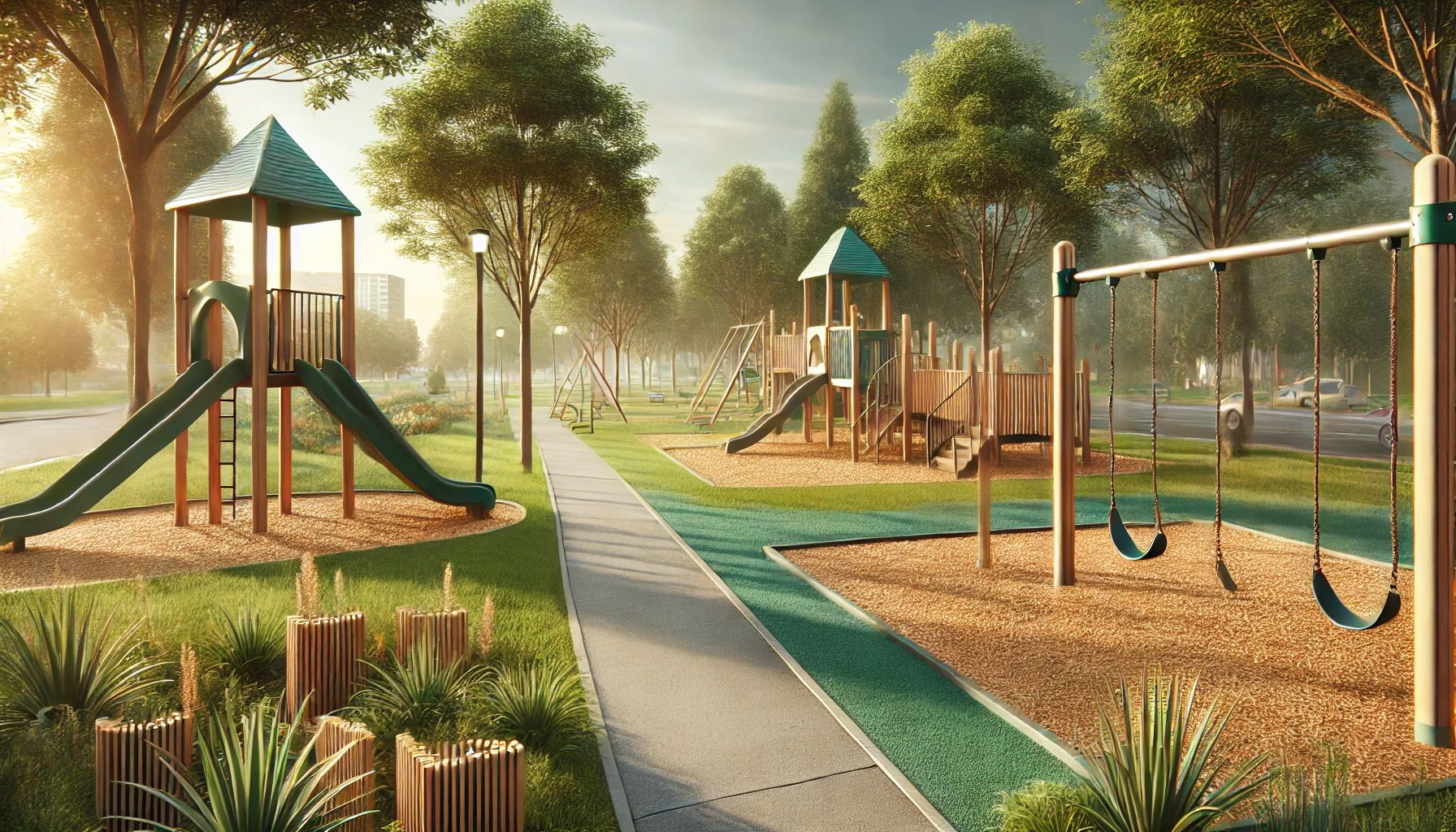Rethinking Playground Sustainability in 2024
The conversation around playground safety has traditionally focused on impact protection and accessibility. However, as we confront growing environmental challenges, the sustainability of playground surfacing materials has become equally critical. This shift reflects a broader understanding that our choices today impact the environmental legacy we leave for the children these playgrounds serve.
The Hidden Environmental Cost of Synthetic Surfaces
While rubber and synthetic surfaces have gained popularity in recent decades, their environmental impact is concerning. These materials often contain chemicals that can leach into soil, contribute to microplastic pollution, and typically end up in landfills at the end of their lifecycle. Moreover, their production process carries a significant carbon footprint that many organizations are only now beginning to fully appreciate.
The Natural Alternative: Engineered Wood Fiber
Engineered wood fiber represents a remarkable intersection of safety, sustainability, and practical functionality. Unlike its synthetic counterparts, this material is renewable, biodegradable, and often sourced from recycled wood products. When properly maintained, it provides excellent fall protection while naturally integrating with the surrounding environment. The material's ability to decompose naturally means it won't contribute to long-term environmental pollution.
Beyond Environmental Benefits
The advantages of engineered wood fiber extend beyond environmental considerations. This material naturally regulates temperature, unlike rubber surfaces that can become uncomfortably hot in summer months. It provides superior drainage capabilities when properly installed, and its natural aesthetic enhances the overall playground experience. Perhaps most importantly, it meets or exceeds all safety standards while maintaining its eco-friendly profile.
The Economic Perspective
While initial installation costs might seem comparable to synthetic options, engineered wood fiber often proves more economical over time. Its natural composition means damaged areas can be easily replenished without replacing entire sections, and its maintenance requirements align with normal playground upkeep schedules. When considering lifecycle costs, including eventual replacement and disposal, the financial advantages become even more apparent.
Looking Forward
As we advance toward more sustainable facility management practices, the choice of playground surfacing materials will increasingly reflect our commitment to environmental stewardship. Organizations that embrace engineered wood fiber aren't just making a practical choice for today – they're investing in a sustainable future for the communities they serve.
